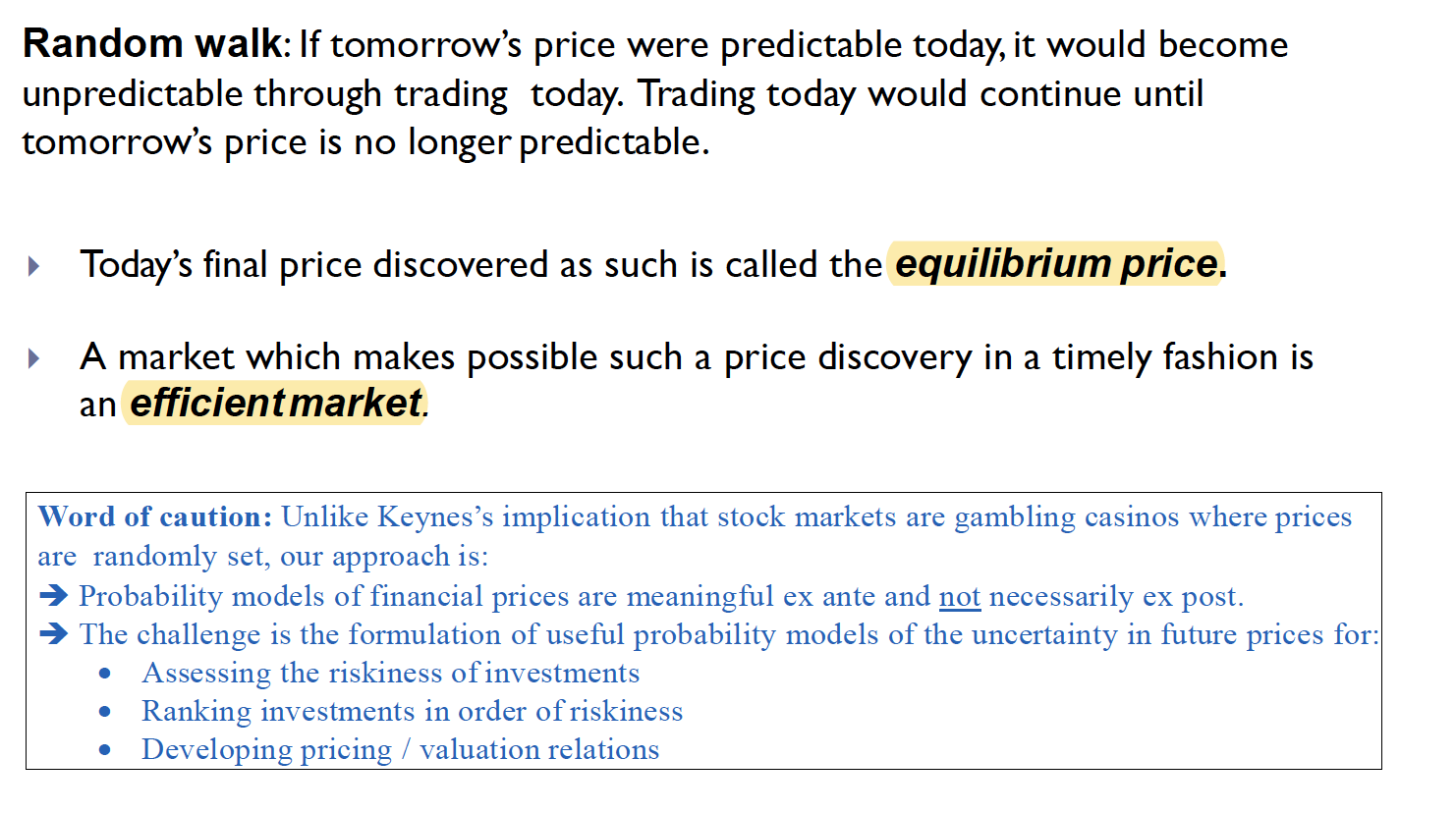FE507 – 1017

FE507 – 1017Concept of RiskRisksTypes of RisksKnown risks and their managementRisksManagement of risksPrices seem to fluctuate randomlyVolatilityContinues-time rate of returnDescrete-time rate of returnComparing two kind of returns with exampleMore volatile markets have yielded higher returnsAre rates of return normally distributed?Price = Value ?The idea of probabilityInterpretation of the probabilityIdeas from financeThe unpredictability of tomorrow’s prices
Concept of Risk
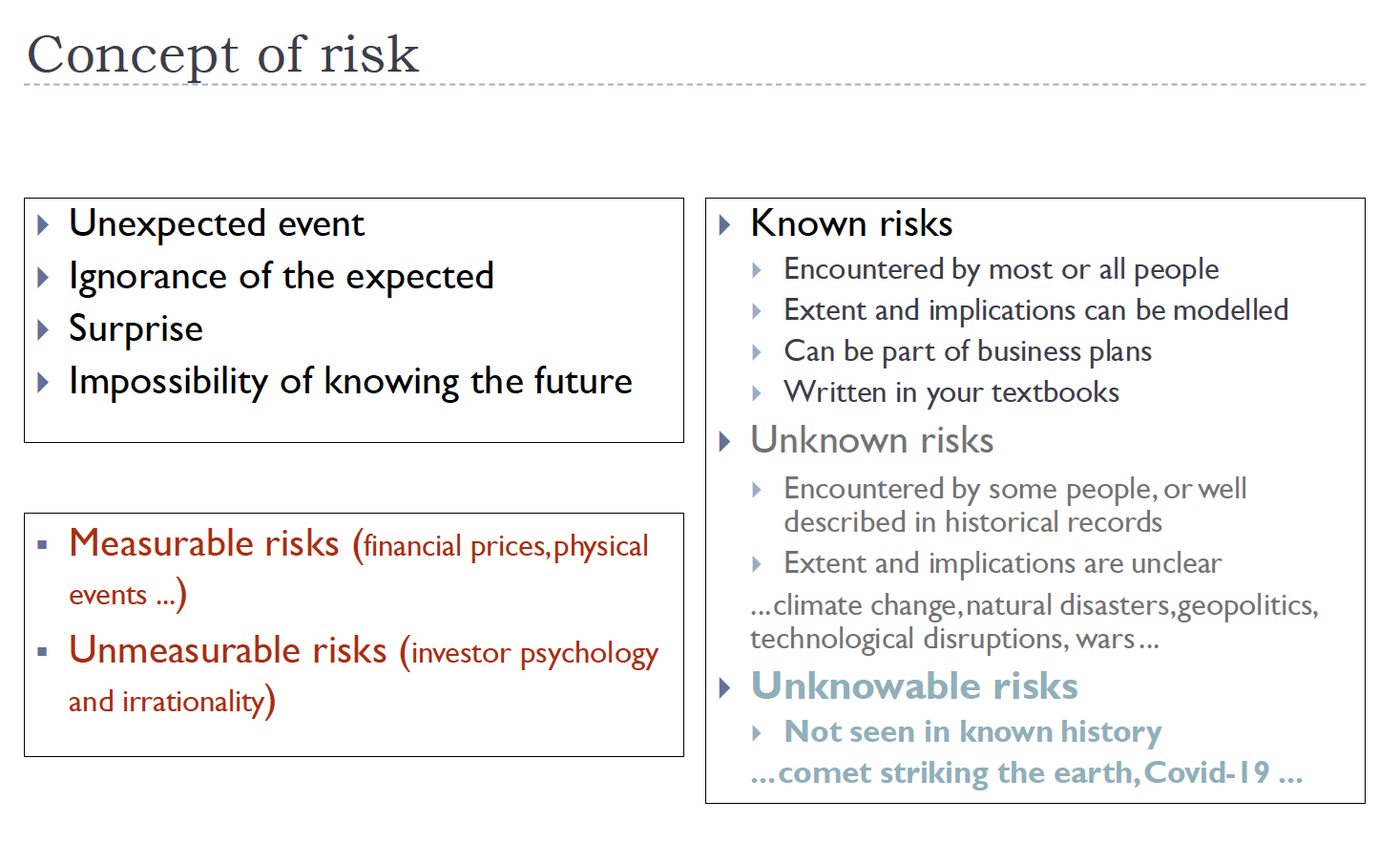
Expected events are not risks
Risks
- Unexpected event
- Ignorance of the expected
- Surprise
- Impossibility of knowing the future
Types of Risks
- Financial prices
- Physical events
Unmeasureable risks
- Investor psychology and irrationality
Known risks
- Encountered by most or all people
- Extent and implications can be modelled
- Can be part of business plan
- Written in your textbooks
Unknown risks
Encountered by some people, or well described in historical records
Extent and implications are unclear
- climate change
- natural disasters
- Geopolitics
- technological disruptions
- wars
- …
Unknowable risks
- Not seen in known history
- comet striking the earth
- Covid 19
Known risks and their management
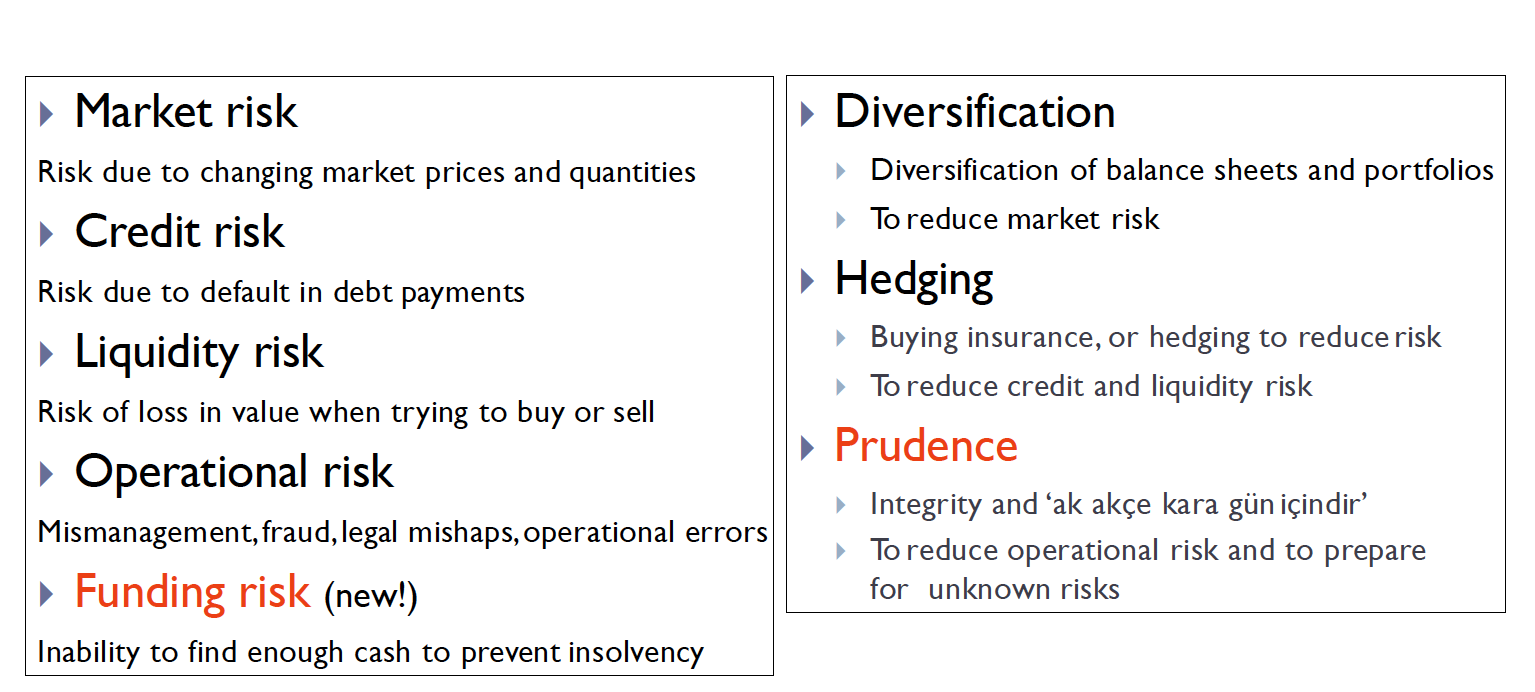
Risks
Market Risk — Diversification
- Risk due to changing market prices and quantities.
Credit risk — Hedging
- Due to default in debt payments
Liquidity risk — Hedging
- Risk of loss in value when trying to buy or sell
Operational risk — Prudence
- Mismanagement
- fraud
- legal mishaps
- operational errors
Funding risk (new)
- inability to find enough cash to prevent insolvency
Management of risks
Diversification
- to reduce market risk
- Diversification of balance sheets and portfolios
Hedging
- to reduce credit and liquidity risk
- Buying insurance
- Hedging
Prudence
- To reduce operational risk and to prepare for unknown risks
- Integrity
Prices seem to fluctuate randomly
Can we know where the market will be next year?
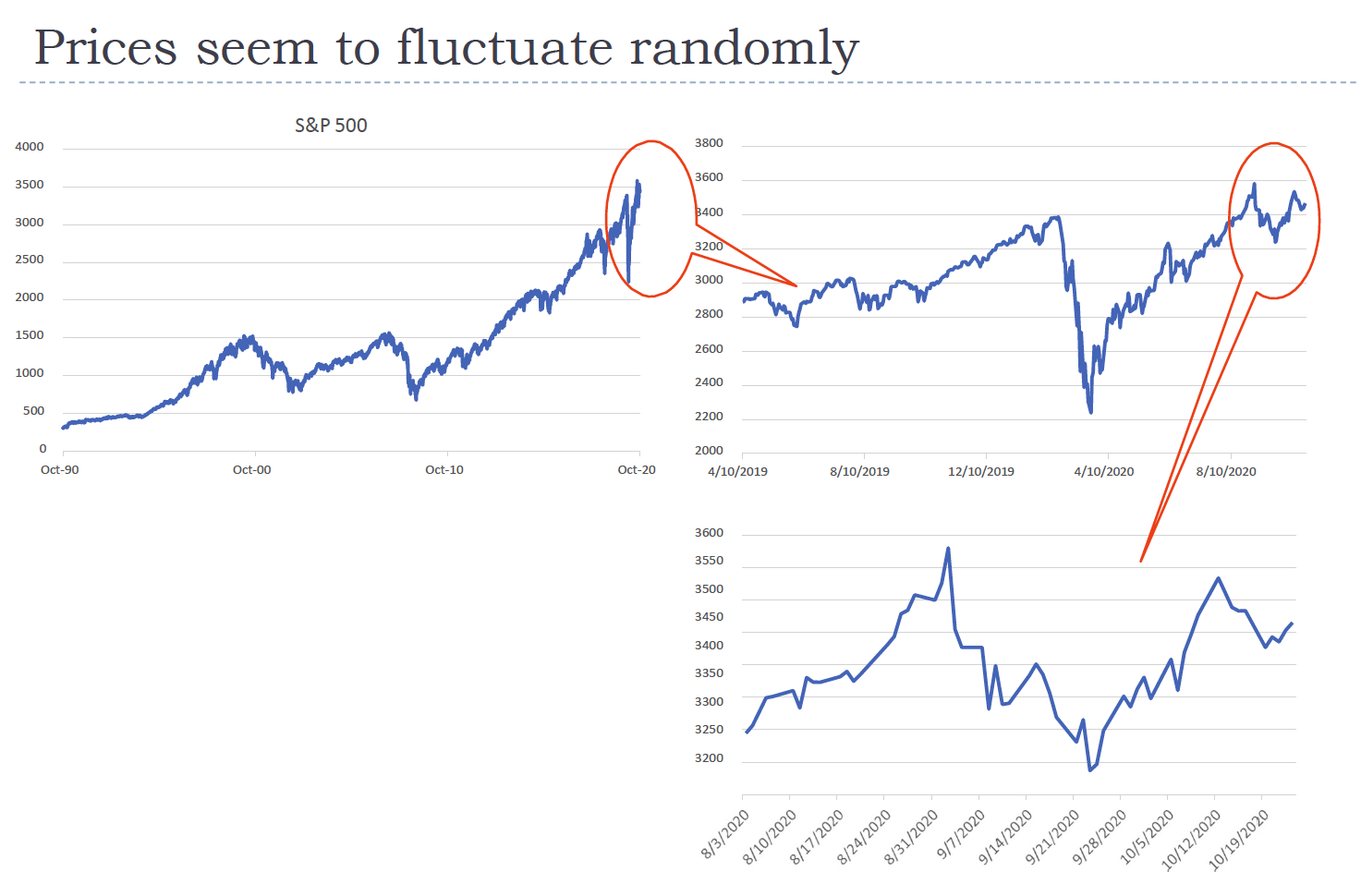
Volatility
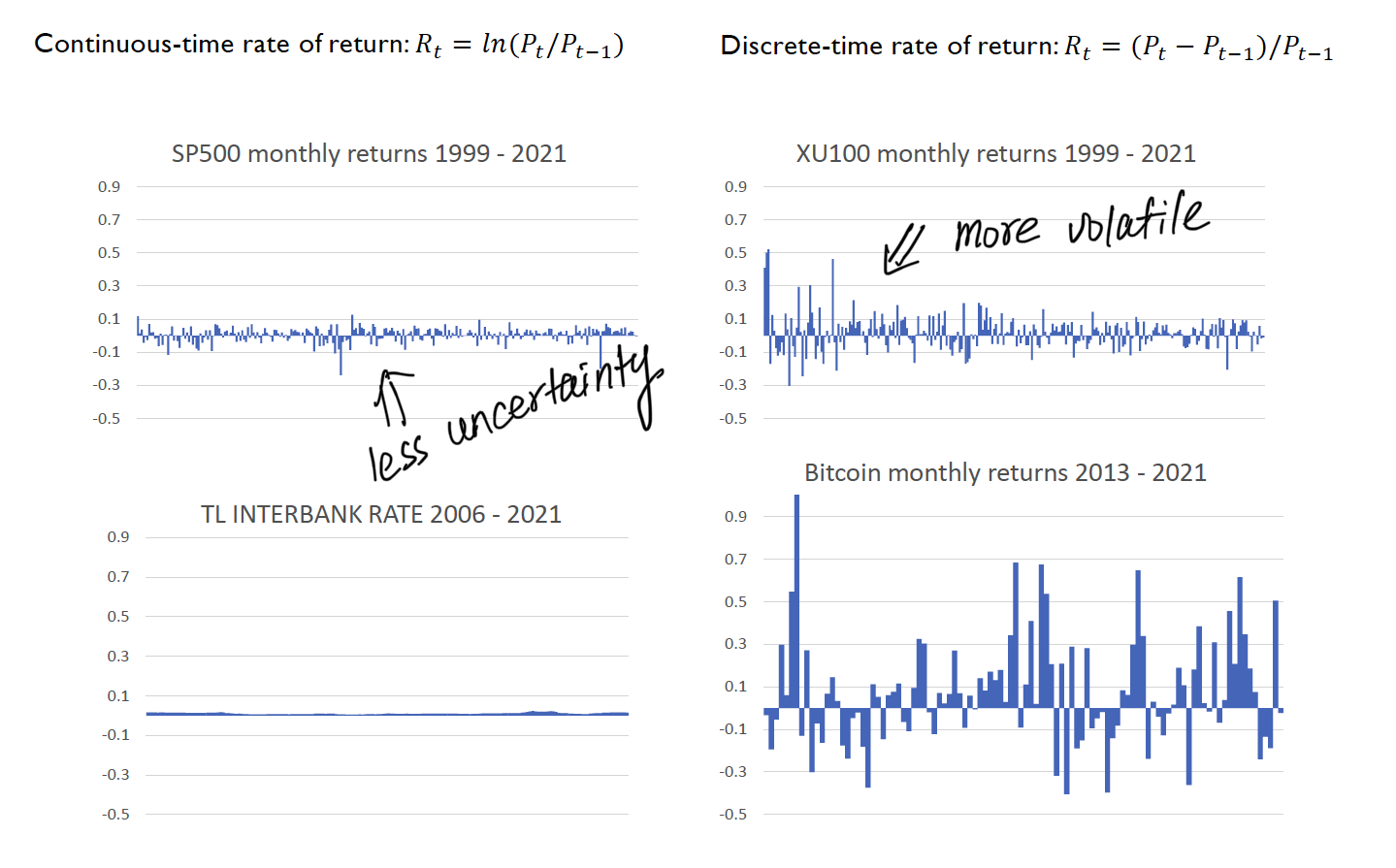
Continues-time rate of return
Better for long term
Descrete-time rate of return
Comparing two kind of returns with example
| Time (t) | Value (v) |
|---|---|
| 0 | 100 |
| 1 | 50 |
| 2 | 100 |
Descrite-return calculation
Continues-return calculation
lie with statistics
More volatile markets have yielded higher returns
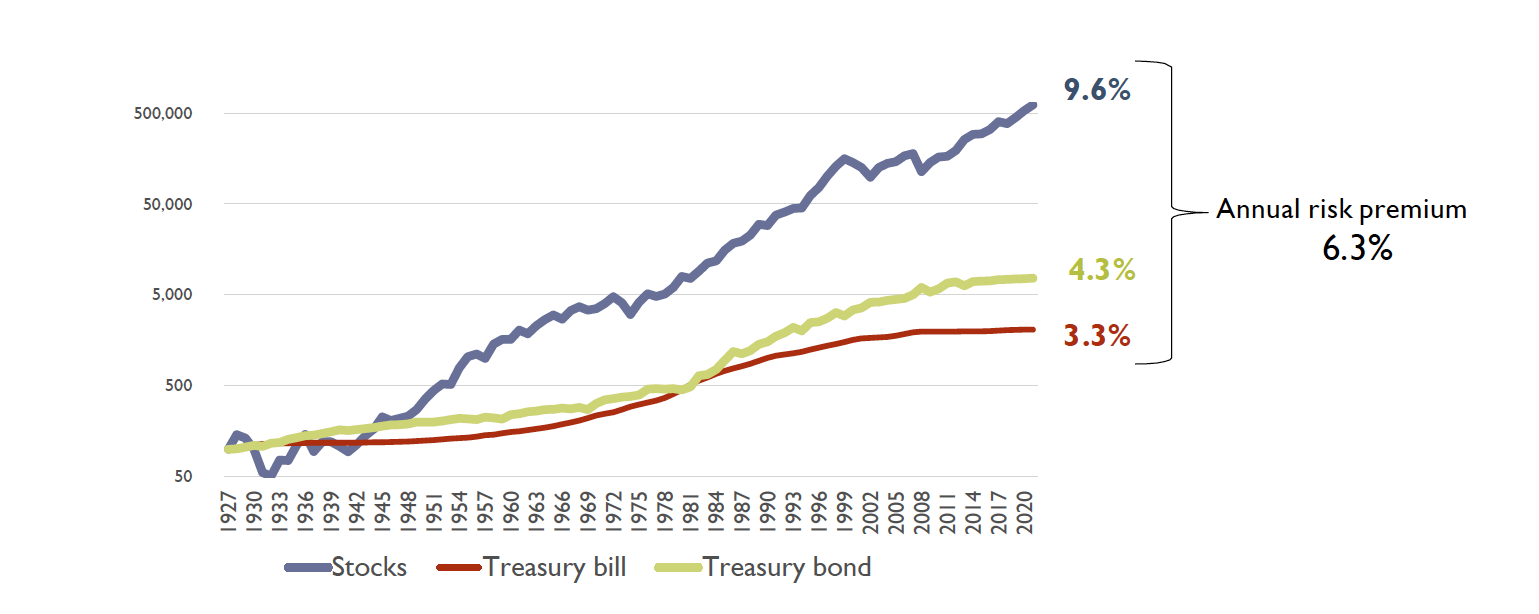
Required rate of return on risky asset = risk-free rate of return + risk premium
R (9.6%) = 3.3 % + 6.3 %

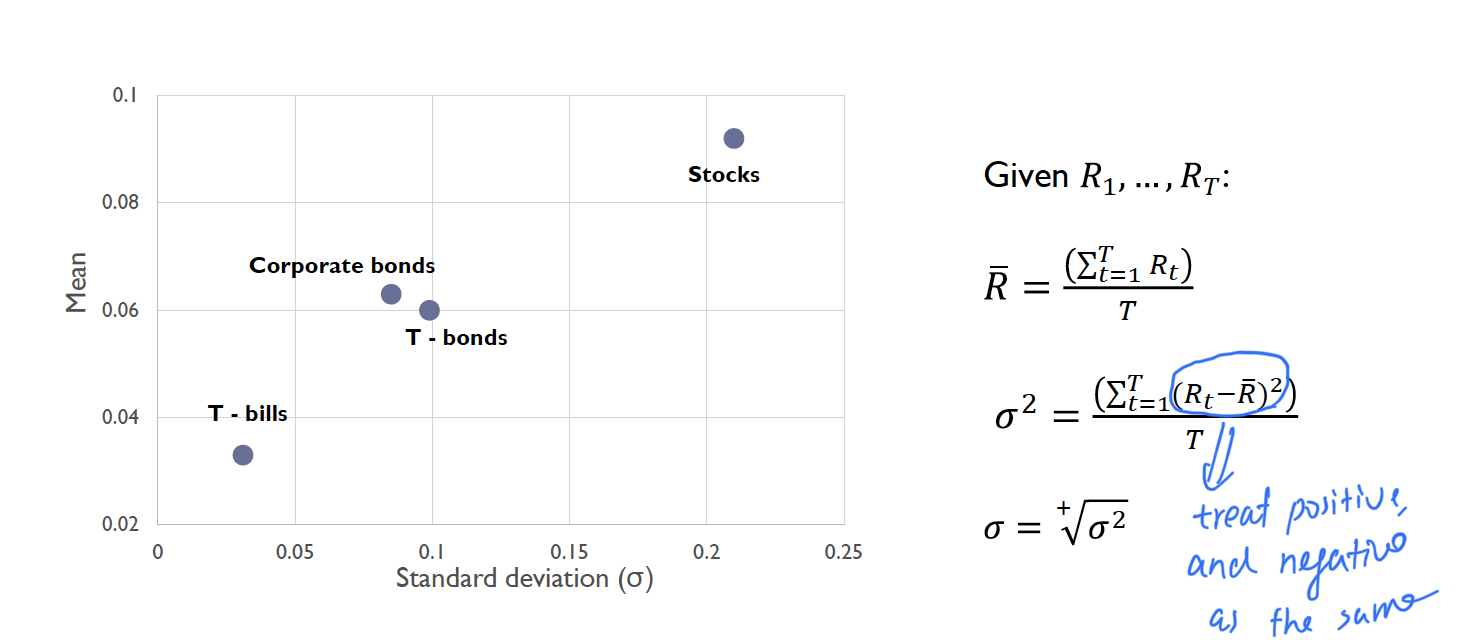
More risky asset has higher rate of return
Are rates of return normally distributed?

in the real-life scenario, the rates of return is a fat-tailed density distribution.
Price = Value ?

Prices of the US equities in the market is much higher than the US GDP
The idea of probability
Interpretation of the probability

Objective interpretation:
Counting of outcomes based on experiments or empirical data.
Subjective interpretation:
Subjective estimate of the likelihood of future event.
Frequency + belief:
Empirical counting modified with subjective believes ( statistics + analysis )
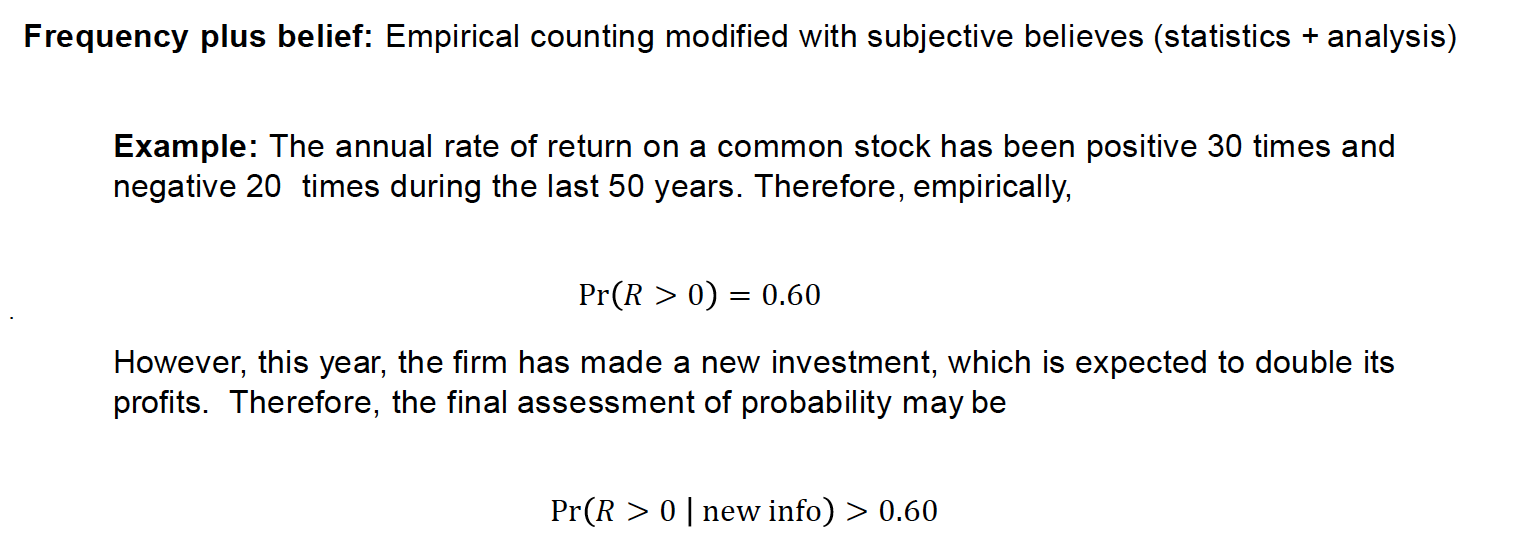
Ideas from finance

The unpredictability of tomorrow’s prices
